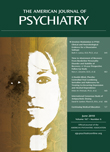Trauma is the great psychiatric narrative of our era. There are two ways to tell the story of the discovery of the importance of trauma. One is the long and difficult struggle for the recognition of the suffering and the rights of victims. In this version of the story, the relationship between the event and the injury is real, and the surprise is the slow awakening of the clinical observers to see what is so clearly to be seen.
The other way to tell the story is as a shift in representation, from one moral accounting to another, a change in ethical vision rather than scientific knowledge. Here the relationship between the injuring event and the sustained hurt is not illusory, but it is much more complex. This second story is the one that Fassin and Rechtman tell, although they work very hard not to reject the first story.
This is an unusual book for the psychiatric bookshelf, because the authors seek to stand free of the scientific facts altogether and to ask simply what impact the emergence of the trauma narrative has had upon the world. This, they argue, is the anthropological stance: to ask how ideas emerge in a society and come to be seen as true, and what follows from that truth, without asking whether those ideas are in fact true. Because of this stance, the book will be read as provocative; but it should be read, because the authors have something to say.
The book, which is focused on France, begins as one would expect—with an account of the great wars of the first half of the twentieth century. In those wars, a soldier with psychiatric distress was suspected of malingering. This seems to have been particularly true in France, although W.H.R. Rivers and Ralph Greenson (fictionally and factually famous for their attention to trauma in soldiers from World War I and II, respectively) were rare enough in the Anglophone world. The authors argue that it was the discovery of the concentration camps—not the experience of men in battle—that fundamentally gave the concept of trauma a social presence. They argue also that because of the death camps, as the concept became socially meaningful, it carried with it the idea that one must testify in the memory of those who have suffered.
The weight and power of the book come from its observation that this testimony has become a political act, and in so doing, the concept of trauma has trivialized matters of great political import and politicized emotional pain. Much of the book is taken up with a history of humanitarian psychiatry and humanitarian medicine. The authors tell this history through a series of disasters: the violent factory explosion in Toulouse in 2001, the Armenian earthquake of 1988, the difficulty in offering humanitarian psychiatry in Africa (the victims felt too different) and, inevitably and painfully, Palestine. There are, they say, three consequences of the emphasis on trauma to individuals as a perspective on world events: personalization, psychologization, and the production of emotion. They argue that it becomes difficult for the humanitarian psychiatrists to see the politics on the ground without the haze of emotionality through which the individual stories are filtered and difficult to separate out the role of witnessing from the role of delivering actual help. This point they make most powerfully in their account of political asylum seekers in France, where a psychiatrist's diagnosis of trauma is now almost required for authenticity, but the very insistence on the emotional specificity of the story means that all trauma stories sound alike. They call these case reports histories without history. "Both before and after the tsunami, the survivors in Aceh were already victims of political domination, military repression, and economic marginalization. Both before and after Hurricane Katrina, the people of New Orleans were already victims of poverty and the discrimination that reinforced class inequalities through racial distinctions. Trauma is not only silent on these realities; it actually obscures them." (p. 281)
Where and how we look affects what we see. This book draws our attention to the practical consequences of a new way of looking.

